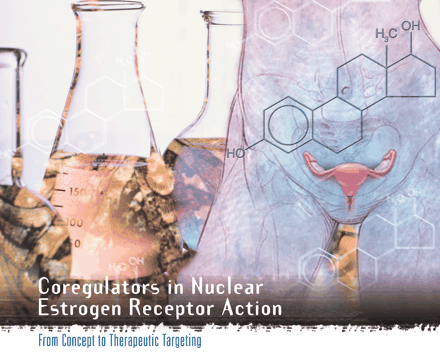Coregulators in Nuclear Estrogen Receptor Action
From Concept to Therapeutic Targeting
Abstract
Estrogens are key regulators of growth, differentiation, and the physiological functions of a wide range of target tissues, including the male and female reproductive tracts, breast, and skeletal, nervous, cardiovascular, digestive and immune systems. The majority of these biological activities of estrogens are mediated through two genetically distinct receptors, ERα and ERβ, which function as hormone-inducible transcription factors. Over the past decade, it has become increasingly clear that the recruitment of coregulatory proteins to ERs is required for ER-mediated transcriptional and biological activities. These “coactivator” complexes enable the ERs to respond appropriately: 1) to hormones or pharmacological ligands, 2) interpret extra- and intra-cellular signals, 3) catalyze the process of chromatin condensation and 4) to communicate with the general transcription apparatus at target gene promoters. In addition to activating proteins, the existence of corepressors, proteins that function as negative regulators of ER activity in either physiological or pharmacological contexts, provides an additional level of complexity in ER action. This review also describes current efforts aimed at developing pharmaceutical agents that target ER-cofactor interactions as therapeutics for estrogen-associated pathologies.

- © American Society for Pharmacology and Experimental Theraputics 2005



